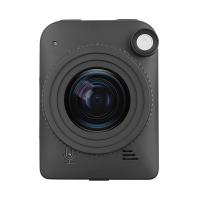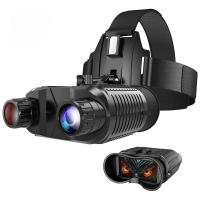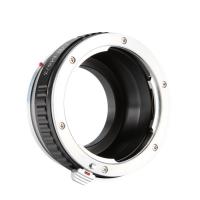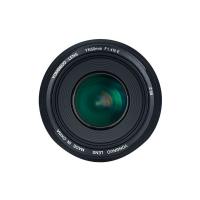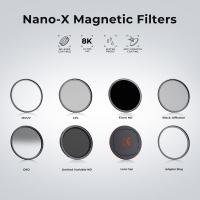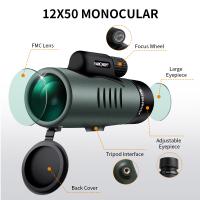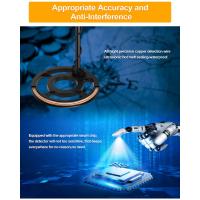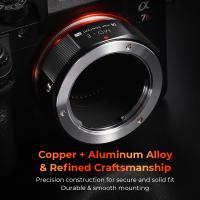What Not To Do With A Microscope ?
When using a microscope, it is important to avoid certain actions that could damage the instrument or compromise the quality of the observations. For instance, one should not touch the lenses with bare fingers or any other object that could scratch or leave marks on the surface. It is also important not to force the focus knobs or adjust the stage controls beyond their limits, as this could cause misalignment or breakage of the internal components. Additionally, one should avoid exposing the microscope to extreme temperatures, humidity, or direct sunlight, as this could affect the clarity and contrast of the images. Finally, it is important to follow the manufacturer's instructions for cleaning and maintenance, and to use only approved cleaning solutions and materials to avoid damaging the delicate parts of the microscope.
1、 Rough handling and improper storage
What not to do with a microscope? The first thing that comes to mind is rough handling and improper storage. Microscopes are delicate instruments that require careful handling and storage to maintain their accuracy and precision. Rough handling can damage the delicate lenses and other components, leading to distorted images and reduced performance. Improper storage can also lead to damage, as dust and other contaminants can accumulate on the lenses and other surfaces, affecting the clarity and accuracy of the images.
In addition to these traditional concerns, there are also new considerations to keep in mind when using microscopes. For example, with the rise of digital microscopy, it is important to be aware of the potential for cyber threats. Hackers can potentially gain access to digital microscope systems and compromise the integrity of the images and data. To prevent this, it is important to use secure networks and protocols, and to keep software and firmware up to date.
Another consideration is the potential for exposure to hazardous materials when using microscopes. Some samples may contain toxic or infectious agents, and it is important to take appropriate precautions to protect yourself and others. This may include wearing personal protective equipment, working in a fume hood or other controlled environment, and properly disposing of contaminated materials.
In summary, when using a microscope, it is important to handle and store it carefully, be aware of potential cyber threats, and take appropriate precautions when working with hazardous materials. By following these guidelines, you can ensure that your microscope remains accurate and reliable, and that you stay safe while using it.
2、 Using incorrect or dirty lenses
What not to do with a microscope is to use incorrect or dirty lenses. Microscopes are delicate instruments that require proper handling and maintenance to ensure accurate results. Using incorrect lenses can lead to distorted images, while dirty lenses can cause blurring and reduce the clarity of the image.
In addition to using the correct lenses and keeping them clean, it is also important to handle the microscope with care. Rough handling can damage the delicate components of the microscope, leading to inaccurate results and costly repairs.
With the latest advancements in technology, microscopes have become more sophisticated and precise. However, this also means that they require more specialized knowledge and training to operate effectively. It is important to follow the manufacturer's instructions and seek guidance from experts when using advanced microscopes.
Furthermore, it is important to consider the safety implications of using a microscope. Some microscopes use high-powered lasers or other hazardous materials, and proper safety precautions must be taken to avoid injury or damage to the equipment.
In summary, using incorrect or dirty lenses is a major mistake when using a microscope. Proper handling, maintenance, and safety precautions are essential to ensure accurate results and protect the equipment. With the latest advancements in technology, it is important to stay up-to-date with the latest best practices and seek guidance from experts when necessary.
3、 Exceeding the maximum magnification limit
What not to do with a microscope is to exceed the maximum magnification limit. Microscopes are designed to magnify objects to a certain extent, and exceeding this limit can result in distorted images or even damage to the microscope itself. The maximum magnification limit is determined by the quality of the lenses and the design of the microscope.
Exceeding the maximum magnification limit can also lead to false conclusions and misinterpretation of data. It is important to use the appropriate magnification for the object being observed to ensure accurate results. For example, if the magnification is too high, it may be difficult to distinguish between different structures or cells, leading to incorrect identification.
In recent years, advancements in technology have led to the development of high-powered microscopes that can magnify objects to unprecedented levels. However, even with these advancements, it is still important to use the appropriate magnification for the object being observed. Additionally, it is important to follow proper maintenance and cleaning procedures to ensure the longevity of the microscope and prevent damage.
In conclusion, exceeding the maximum magnification limit is a common mistake that can lead to distorted images, misinterpretation of data, and damage to the microscope. It is important to use the appropriate magnification for the object being observed and to follow proper maintenance and cleaning procedures to ensure accurate results and the longevity of the microscope.
4、 Using inappropriate lighting or excessive brightness
What not to do with a microscope is to use inappropriate lighting or excessive brightness. This can cause damage to the specimen being observed and can also strain the eyes of the user. Inappropriate lighting can also result in inaccurate observations and misinterpretation of data.
In recent years, there has been a growing concern about the impact of excessive light exposure on human health. Studies have shown that exposure to bright light can disrupt the circadian rhythm, leading to sleep disturbances and other health problems. This has led to the development of new lighting technologies that are designed to minimize the negative effects of excessive light exposure.
When using a microscope, it is important to use appropriate lighting that is not too bright or harsh. This can be achieved by using a dimmer switch or by using specialized lighting systems that are designed for microscopy. It is also important to use lighting that is appropriate for the type of specimen being observed. For example, some specimens may require a specific wavelength of light to be properly observed.
In conclusion, using inappropriate lighting or excessive brightness when using a microscope can have negative effects on both the specimen being observed and the user's health. It is important to use appropriate lighting that is not too bright or harsh and to use lighting that is appropriate for the type of specimen being observed. By following these guidelines, users can ensure accurate observations and protect their health.






















